Hip Pain Location Diagram
Hip pain is a general term for pain in or around the hip joint. It is not always felt in the hip itself, but it is felt in the groin or thigh. hip pain is a common joint pain and is caused by many different conditions.
Hip pain is described as pain that comes from the area where the top of your leg joins your hip. Pain can occur in front, behind, inside, outside, or anywhere in the pelvic area. Your pain type may be a dull ache, a sharp ache, or a sudden or gradual ache.
Table of Contents
Symptoms
- Pain: Dull ache or sharp pain in the hip joint or surrounding areas.
- Stiffness: Difficulty moving the hip joint or experiencing a reduced range of motion.
- Swelling: Inflammation or swelling around the hip area.
- Weakness: Feeling of weakness in the hip area, making it challenging to support body weight.
- Limping: Altered gait or limping while walking due to pain or discomfort.
- Clicking or popping: Audible sounds when moving activity the hip joint.
- Radiating pain: Discomfort that spreads to the groin, buttocks, thigh, or knee.
- Difficulty sleeping: Hip pain can disrupt sleep, especially when lying on the affected side.
- Muscle spasms: Involuntary muscle contractions in the hip area.
Causes
- Osteoarthritis: A degenerative joint disease that affects the hip joint, causing pain, stiffness, and reduced range of motion.
- Rheumatoid Arthritis: An autoimmune disorder that can also affect the hip joint, leading to pain, swelling, and joint damage.
- Bursitis: Inflammation of the bursae, small fluid-filled sacs that cushion the hip joint, causing pain and tenderness.
- Tendinitis: Inflammation of tendons around the hip joint due to overuse or injury, resulting in pain and limited mobility.
- Hip Labral Tear: A tear in the cartilage lining the hip joint, leading to pain, clicking sensations, and stiffness.
- Sciatica: Compression or irritation of the sciatic nerve, causing radiating pain from the lower back to the hip and leg.
- Hip Fracture: A break in the hip bone, often due to falls or injuries, resulting in severe pain and difficulty walking.
- Hernia: Inguinal or femoral hernias can cause pain in the groin area that may be mistaken for hip pain.
- Infections: Infections in the hip joint or surrounding tissues can lead to pain and inflammation.
- Nerve Impingement: Compression of nerves in the hip area can cause pain and discomfort.
- Tumors: Rarely, tumors in or around the hip joint can cause pain and other symptoms.
Diagnosis
Diagnosing the cause of hip pain involves a comprehensive approach that typically includes the following steps:
- Medical History: Your healthcare provider will ask about your symptoms, the duration of pain, any previous injuries, and your medical history.
- Physical Examination: A thorough examination of the hip and surrounding areas will be conducted to assess the range of motion, strength, and any signs of inflammation or swelling.
- Imaging Tests: X-rays, MRIs, or CT scans may be ordered to visualize the bones, joints, and soft tissues to identify any abnormalities or structural issues.
- Blood Tests: In some cases, blood tests may be performed to rule out systemic conditions or to check for signs of inflammation.
- Electromyography (EMG) or Nerve Conduction Studies: These tests may be ordered to assess nerve function if nerve-related problems are suspected.
Hip Pain Location Diagram Anterior View
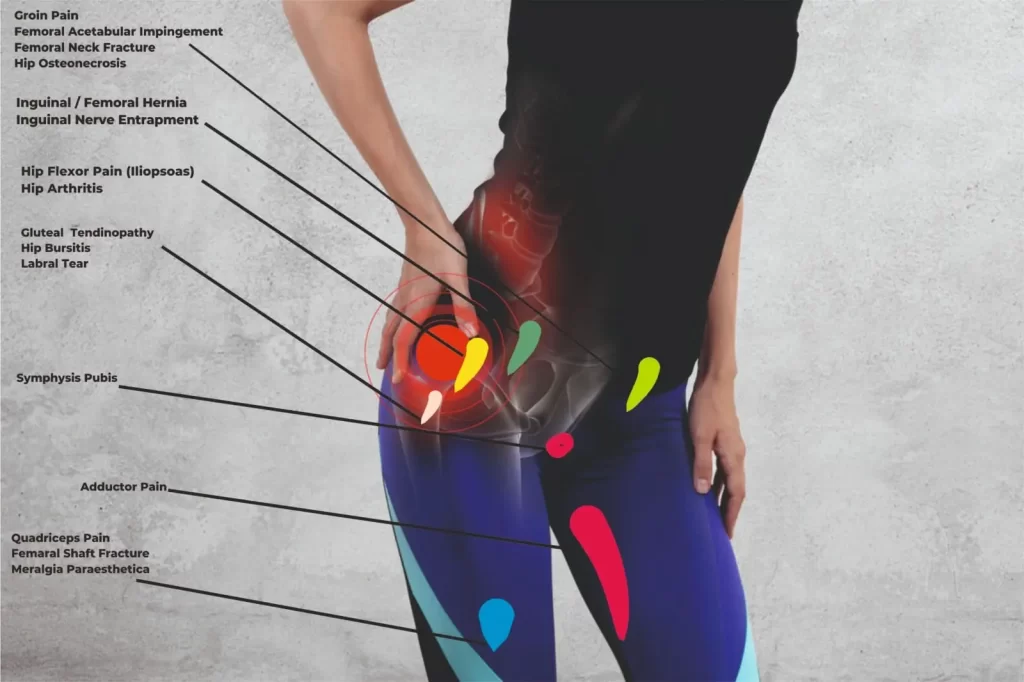
- Lower abdomen: In this area you can feel an inguinal or femoral hernia, spreading into the groin. The pain is sometimes severe, uncomfortable, or painful, sometimes burning, often a palpable swelling. Inguinal nerve entrapment often feels more like a burning or electric pain, and the skin is often hypersensitive from the lower abdomen to the groin.
- Anterior Hip: Directly in front of the hip, most people experience hip pain, hip arthritis, aceticular attack of the femur, avascular necrosis/osteonecrosis of the hip, and stress fractures or complete fractures of the femoral neck.
- Lateral Hips: Hip bursitis, sometimes hip tears, and gluteal tendinopathy are felt on the side of the hip.
- Anterior thigh: Quadriceps strains and tears and femoral shaft sprains or complete fractures are known here.
- Front Pelvis and Inner Thigh: Symphysis Pubis is the joint in the front of the pelvis and pain is often related to pregnancy, Adductor pain can also be felt in this area and the inner thigh.
Posterior Hip Pain Location Diagram
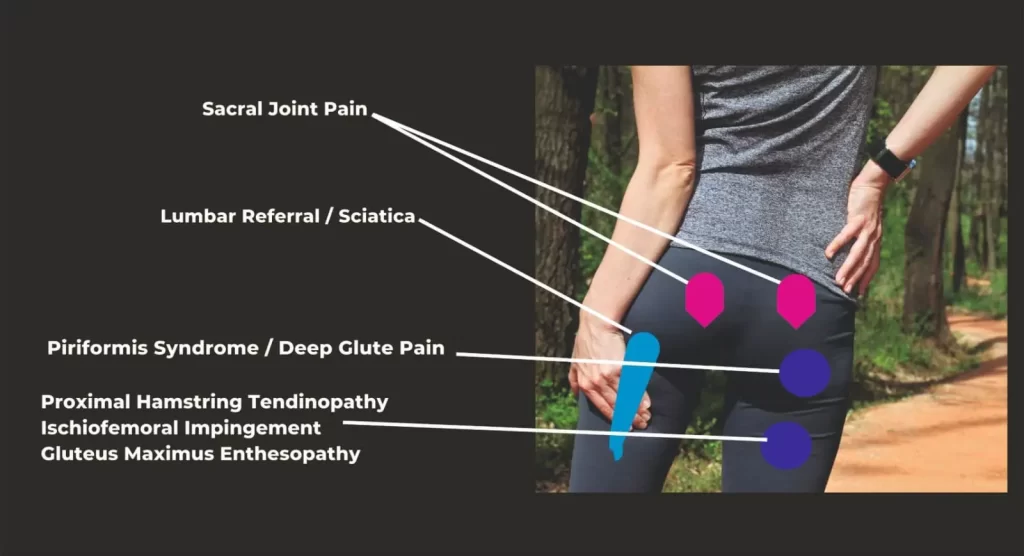
- Sciatic bone: The sciatic bone or sciatic fold is the insertion of the calcaneal tendon. Tendonopathy of the fixed tendon is felt here.
- Side of hip and back of thigh: This is a common treatment area for lower back and sciatica pain.
- Middle of the buttock: Piriformis syndrome and deep buttock syndrome are usually felt in the gluteal muscle, but can also refer to the back of the thigh.
- Middle Pelvis: The sacroiliac joint is where the spine and pelvic floor meet, SIJ pain is common during pregnancy, inflammatory conditions, and trauma.
Lateral hip pain location diagram
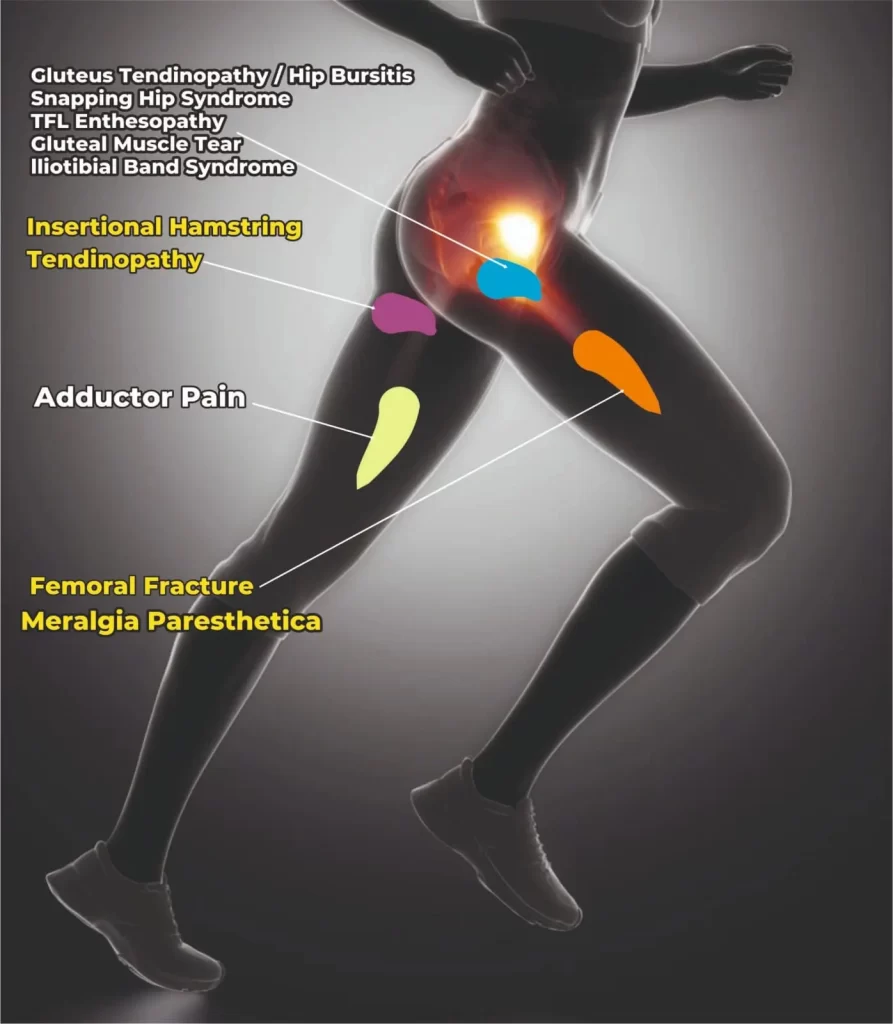
- Back of hip and inner thigh: Tendinopathy and adductor pain are common in these areas.
- Hip side: Iliotibial band syndrome, hip bursitis, gluteal tendinopathy or tear, TFL enthesopathy, hip impingement syndrome, femoral fracture, and meralgia paraesthetica are all common causes of lateral hip and thigh pain.
FAQs
pain that occurs when sitting, squatting, or turning,
pain in the groin region or thigh area,
hip pain that extends to the knee,
sharp or sharp pain,
a clicking or popping sensation in the pelvis.
Diagnosis may also be based on imaging tests, such as X-rays, CT scans, and MRIs, which provide an accurate picture of the bones and soft tissues surrounding your hip joint, such as ligaments and bursae. Blood tests or joint aspiration may also be necessary to get a correct diagnosis.
Arthritis. Osteoarthritis and rheumatoid arthritis are the most common causes of hip pain, especially in older adults. Arthritis causes inflammation of the hip joint and breakdown of the cartilage that cushions the hip bone. The pain gradually worsens.
Problems with the hip joint itself usually cause pain on the inside of the hip or in the groin. Hip pain on the outside of the hip area, thigh area, or outer buttock region is usually caused by problems with the muscles, ligaments, tendons, and other soft tissues surrounding the hip joint.
Hip pain is a common symptom that can be caused by anything from sports-related injuries to arthritis disease. You can usually treat hip pain at home by taking a break from physical activity and taking over-the-counter pain reliever medicines. But if the pain persists or worsens, other treatments may be needed.

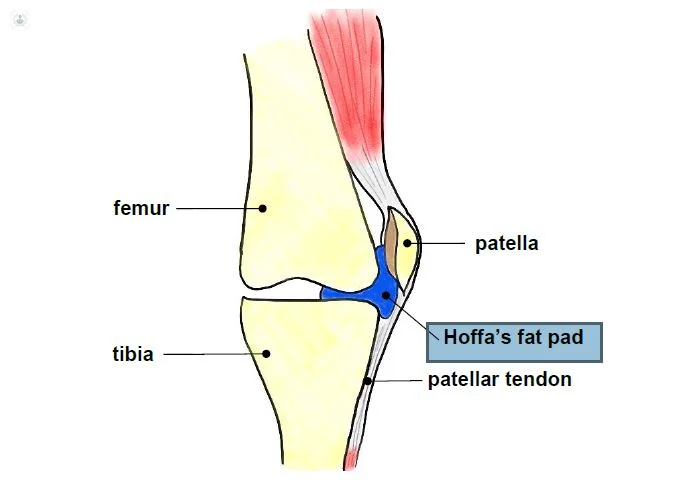
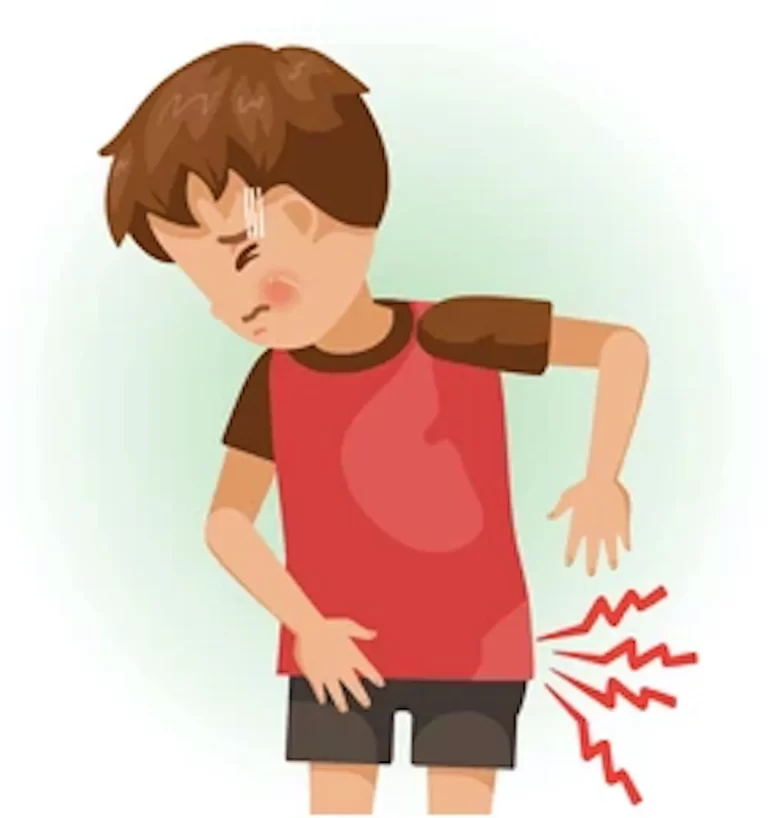
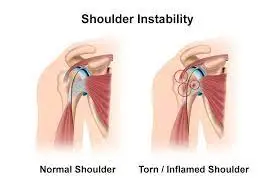

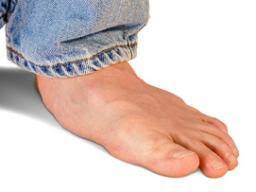
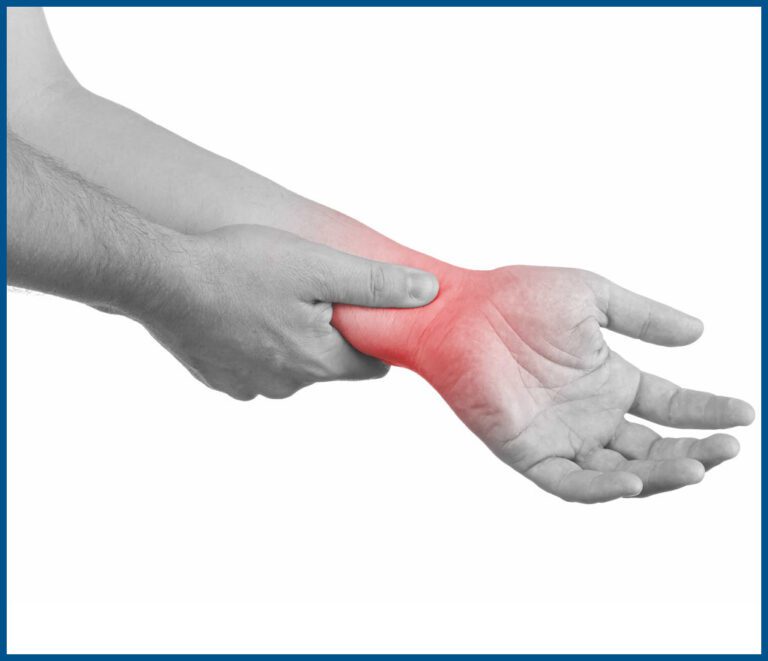
One Comment